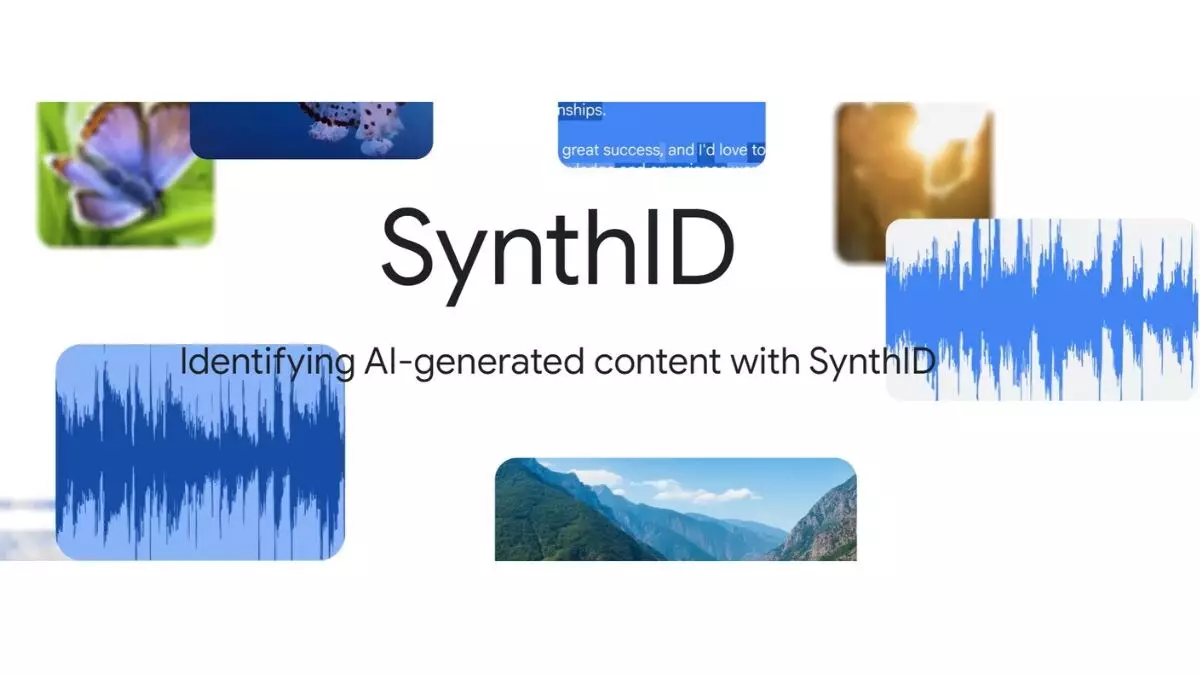In a move that may potentially reshape the landscape of artificial intelligence (AI) and its applications, Google DeepMind recently unveiled SynthID, a groundbreaking technology designed to watermark AI-generated text. Announced on social media, this advancement seeks to enhance the transparency of digital content across an array of formats, including text, images, videos, and audio. Although the tool is currently limited to watermarking text, its broad applicability indicates a significant step toward combating misinformation and ensuring content integrity in a rapidly evolving digital world.
The surge of AI technologies has led to an unprecedented proliferation of content online. A recent study from Amazon Web Services AI lab suggested that nearly 57.1% of sentences circulating on the internet that have been translated into multiple languages may have originated from AI tools. This alarming statistic brings to light the substantial presence of AI-generated text and its implications for information authenticity. While the rise of AI chatbots may lead to a dilution of quality and reliability, the gravity of this issue extends beyond mere “gibberish”; it poses serious threats concerning the potential for misinformation and manipulation.
As the capabilities of AI expand, so do the opportunities for misuse. Misinformation can significantly shape public opinion, particularly in an era where social media platforms serve as conduits for communication. In extreme cases, the manipulation of online discourse through AI-generated content can influence real-world events, such as elections, and sow discord against public figures. The challenges associated with detecting AI-generated content become even more pronounced when considering the complexity of human language. The very nature of text makes it easy for those with nefarious intentions to disguise their outputs, reinforcing the need for effective watermarking solutions like SynthID.
SynthID: A Technical Breakthrough
SynthID introduces a unique solution to the problem of identifying AI-generated text. Unlike some conventional forms of watermarking—where outright marking of content may be impractical—SynthID leverages machine learning algorithms to subtly embed its identifying markers into the fabric of the text itself. By predicting and swapping words based on their contextual likelihood, the system can cleverly integrate watermarks throughout the text without being immediately detectable to the reader. For instance, by examining the likelihood of certain words appearing after others, SynthID can replace common phrases with less obvious synonyms that act as hidden markers.
The sophistication of this technology is not just limited to text. When it comes to images and videos, SynthID embeds watermarks directly within pixel data, rendering them invisible to the naked eye while still allowing for future detection. For audio files, the approach is similarly adept; audio waves are converted into a visual representation before the watermark is integrated, ensuring robustness across different media types.
The Road Ahead: Challenges and Opportunities
Despite the promise offered by SynthID, the technology is not without its limitations. Currently, the watermarking feature is only accessible to businesses and developers, and full functionalities for various modalities are restricted to Google’s internal use. This raises questions about the equitable distribution of such pivotal technology and the potential for its application in broader spheres. Moreover, the issue of effective enforcement and recognition of watermarked content remains a challenge; for SynthID to be truly effective, it needs widespread acceptance and use across various platforms.
Ultimately, the introduction of SynthID underscores an urgent need for ethical standards in the deployment of AI technologies. As digital content continues to proliferate at an alarming rate, proactive measures like watermarking become imperative tools for upholding integrity and trustworthiness. By establishing a transparent framework for identifying AI-generated content, Google DeepMind is taking significant steps forward; however, achieving comprehensive effectiveness will require collaborative efforts from tech companies, lawmakers, and society at large. The future of information may depend on the solutions we implement today.

